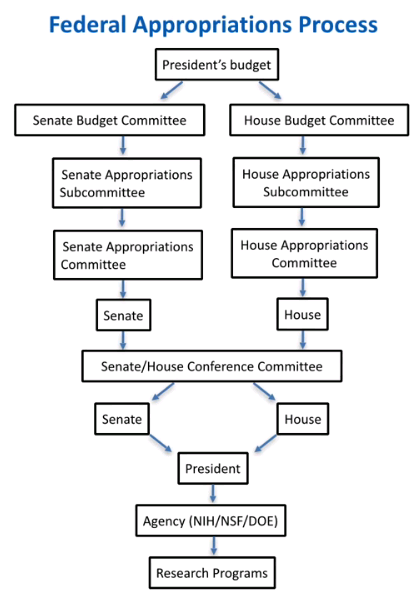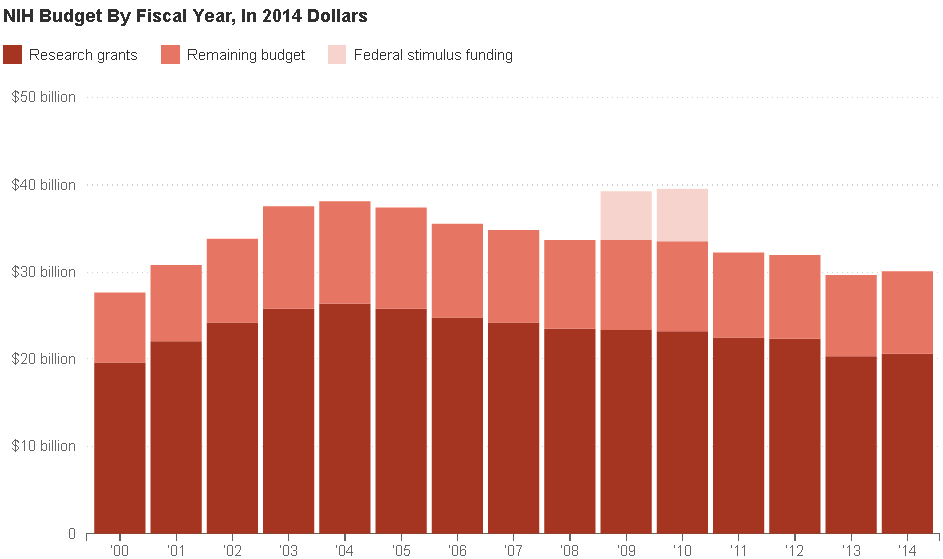 source [Normal procedure for budget definition hierarchy]
source [Normal procedure for budget definition hierarchy]Some money comes form private institutions, perhaps the best example of this has been Bell Labs that gave us such advancements as the transistor, but the vast majority comes from gubernamental organizations.
The NIH funds provides almost 2/3 of all research that flows to universities. Whose budget adjusted to inflation depended on sustained uncontrolled growth in order to keep filled the continuously growing positions at universities.
[6]
[Figures for 2014 are preliminary. Figures for 2000-2013 have been adjusted for inflation using the Biomedical Research and Development Price Index. Federal stimulus funds in 2009-2010 came from the American Recovery and Reinvestment Act of 2009.NPR analysis of NIH data; NIH (PDF: 2000-2013, 2014); recovery.nih.gov]
This science budget has many points of competition. First against civil groups (banks, churches, hospitals, labor unions...every social group you can think of). Later by particular organizations out of the branches of science.
Biomedical sciences have far stronger support than other areas of scientific research. Mainly due to the fact that voluntary organizations care deeply and passionately about research for diseases. They are usually conformed of patients and their family.
This is one of the reasons sporadic possible consequences for humans found during research are so interesting for researchers. Even if their research is not related to or intended humans at all, as is a big opportunity for funding.
Politics and passionate interest are a huge bottleneck for funding. This is problematic since even when there are scientific societies that advocate for public policy most of the time researchers remain on the sidelines.
Is almost infuriating as one would imagine science being generally a virtuous cause, more dependent on public funding and filled with highly educated people that could make a stronger case when compared to other interests (if one assumes that science stimulates long term the economy and benefits mankind).
Most scientists are not affiliated with a professional society with an advocacy program. Is a must. Public advocacy programs in most countries are a novelty for professional scientists. Being part of one means being active in it, which is now easier than ever thanks to social media.[7]
Transparency of local funding for grant applications and courtesy habits like a printed thank you letter to elected officials help, as is part of the social layer that is politics. Politicians tend to be poorly educated in the sciences and this is another part of science communication. One that is severely neglected.[8]
How grants work?
Most grants are of the focused research type. Someone submits a project and a limited funding is given for that project alone.


